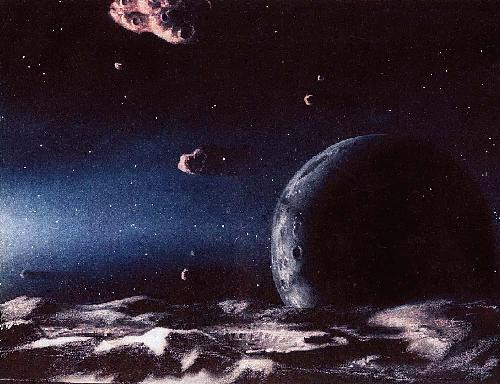





|




|
Home Page |
|
|---|---|

Starting in 1992, astronomers have become aware of a vast population of small bodies orbiting the sun beyond Neptune. There are at least 70,000 "trans-Neptunians" with diameters larger than 100 km in the radial zone extending outwards from the orbit of Neptune (at 30 AU) to 50 AU. There may be many more similar bodies beyond 50 AU, but these are presently beyond the limits of detection. Observations show that the trans-Neptunians are mostly confined within a few degrees of the ecliptic, leading to the realization that they occupy a ring or belt surrounding the sun. This ring is generally referred to as the Kuiper Belt.
The Kuiper Belt holds significance for the study of the planetary system on at least two levels. First, it is likely that the Kuiper Belt objects are extremely primitive remnants from the early accretional phases of the solar system. The inner, dense parts of the pre-planetary disk condensed into the major planets, probably within a few millions to tens of millions of years. The outer parts were less dense, and accretion progressed slowly. Evidently, a great many small objects were formed. Second, it is widely believed that the Kuiper Belt is the source of the short-period comets. It acts as a reservoir for these bodies in the same way that the Oort Cloud acts as a reservoir for the long-period comets.
The study of the trans-Neptunians is a rapidly evolving field, with major observational and theoretical advances in the last few years. A partial list of relevant papers is included on this Web page. You can also find a Table of the known trans-Neptunians, the discovery images for 1992 QB1, and a blink sequence which shows how these objects are identified.
David Jewitt

